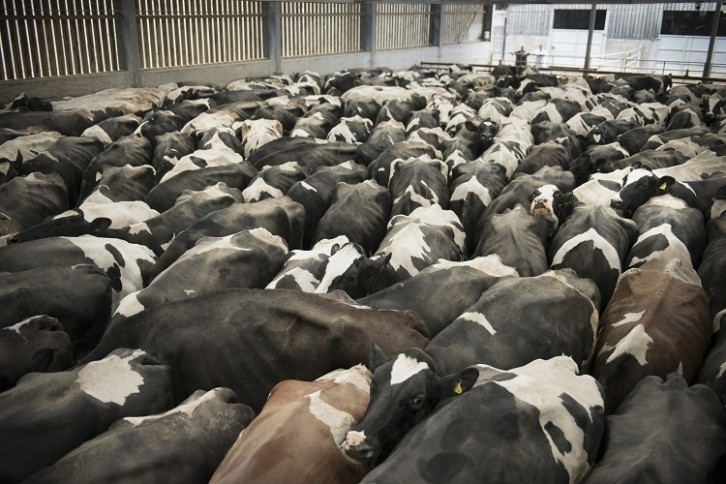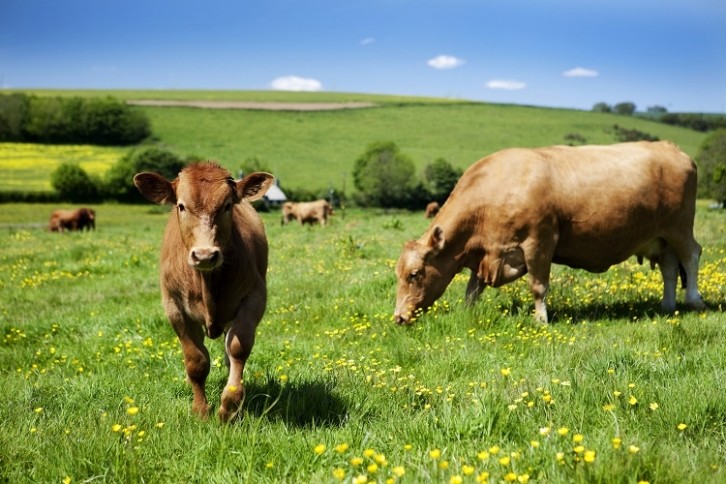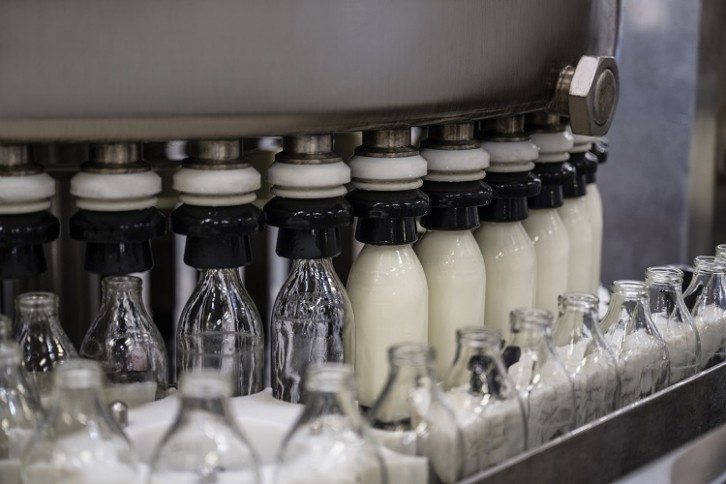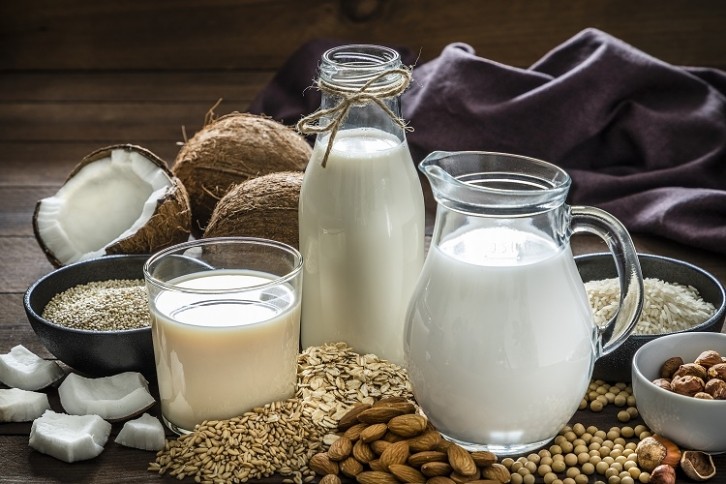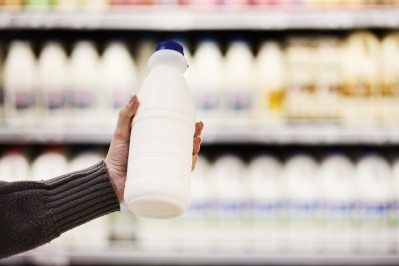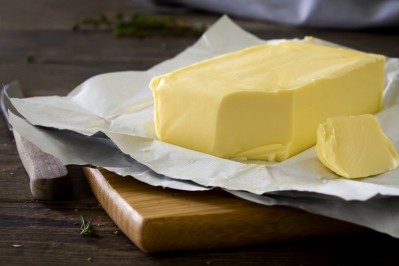Why are consumers turning away from dairy?
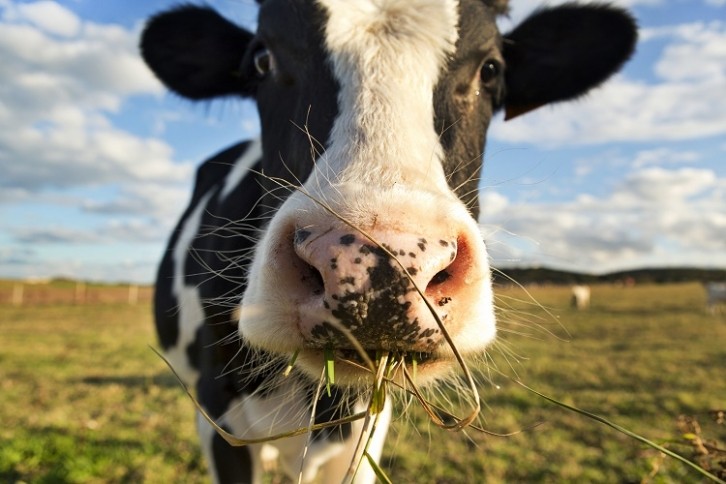
Dairy products such as milk, butter, cream and cheese have been eaten for hundreds of years and are considered essential shopping items for many. Furthermore, the EU dairy sector is the second largest agricultural sector in the EU, representing more than 12% of total agricultural output.
However, recent decades have seen a decline in demand for dairy products, particularly cow's milk, with the Defra Family Food Survey showing that the average consumption of cow's milk dropped by nearly 50% in the UK since 1974.
Similarly, a study conducted by the US Department of Agriculture (USDA), found that consumption of milk in the US has decreased over each of the past seven decades, falling at its fastest rate in the 2010s. In 2019 it was down to 0.49 cups per person per day from 0.96 cups per person per day in 1970.
So what aspects of the dairy industry are concerning consumers and what can the dairy industry do to win those consumers back?
Animal welfare and the dairy industry
Consumer awareness of animal welfare in the dairy industry has been highlighted as one of the primary reasons for many to choose dairy alternatives.
According to market intelligence agency Mintel, 57% of people surveyed cited “animal welfare concerns regarding dairy farmers” as their reason for switching from dairy products. Moreover, a survey carried out by the European Commission found that 84% of Europeans believe that the welfare of all farmed animals should be better protected in their country than it is now.
“Good animal welfare depends on three components: physical well-being, mental well-being, and natural living,” Olga Kikou, head of animal welfare charity Compassion in World Farming (CIWF) EU, told FoodNavigator. “In intensive dairy farms, all three of these are compromised by periods of confinement in indoor housing, health problems due to higher milk yields and distress caused by early separation from their calves. Forced higher milk yields cause mastitis, lameness, weight loss, poor body condition and infertility. These in turn cause the cows to be killed after a few years despite having a natural life span of around 20 years. Inadequate housing (poor ventilation, concrete flooring, crowded conditions) and “zero-grazing” systems also exacerbate these and other health issues.”
However, conditions are improving and regulations across Europe are helping to ensure the welfare of the cows.
“Organic standards in the EU ensure that dairy cows have access to pasture during the grazing season and that cows are fed a more natural diet with plenty of roughage, which is good for their digestive health. They encourage better welfare and breeding in dairy cattle to reduce problems like lameness, mastitis and poor fertility,” explains Kikou. “Soil Association organic standards additionally ban the sale of calves under one month old for export, or their sale at market under 12 weeks old (unless they are with their mother)."
It’s also important to recognise that many farmers are already prioritising animal welfare in their production processes.
Farms such as Old Hall Farm in Norfolk, England, for example, puts the health of their cows and calves first.
"Our cows keep their calves for 9-12 months, which ensures a very high level of cow happiness and health," Rebecca Meyhew of Old Hall Farm told FoodNavigator. "We are one of very few dairies in the UK that do this, but it is a growing movement. Our cows are allowed access to pasture every day when the weather allows, and if it is too wet for them to go out, they have lovely deep straw beds to sleep on not cubicles. Being a straw based system means that there is no slurry which is better for the environment, the soil and the cows. They're raised on multi species pasture, not just grass, which means that they have access to a huge variety of plant species. This is beneficial to their gut health and means that they can self-medicate from our pastures and hedges which results in lower worm counts, and better overall health. Herbs and legumes in the pasture also make it more satisfying to them, and they are happier because of that. We do not feed silage - it is very acidic and damages the cows delicate rumen - we feed hay and haylage, which has more fibre, whilst still being an excellent source of energy for milk production.
"Our cows have their first calf between 2.5 and 3 years of age on average. We believe in letting them mature before they're pushed to having calves. Our lactation is approximately 18 months, which means the cow is only calving every 18 months to 2 years, rather than every 12 months, putting less strain on their bodies.
"As a result of everything that we do, our cows live longer lives - most dairy cows in the UK have no more than 3 lactations (I believe that the average is 2.5) which means cows are culled before they are 5 years old. Our cows range in age from 3-14. This definitely shows massively improved animal welfare outcomes."
What more can governments do to improve animal welfare in dairy farming?
Tougher regulations enforced by the EU and non-EU governments across Europe would likely have a positive impact on dairy consumption as consumers would be reassured in the welfare of the animals producing those dairy products.
“As the largest milk producer with about 20 million dairy cows, the European Union must scale up its efforts to ensure higher welfare for dairy cows,” says CIWF’s Kikou. So what aspects of intensive dairy farming require the most urgent attention?
“As a priority, individual calf pens must be banned and calves, if they are to be removed from their mother, must be kept in pairs at a minimum. Access to pasture for grazing should be required for a minimum period of 120 days each year, breeding for ultra-high milk production should end, and instead cows should be bred that produce moderate quantities, thus reducing the health and welfare problems this causes and also enabling them to obtain sufficient energy from their natural diet of grazing. Despite the European Food Safety Authority’s (EFSA) 2023 opinion that common practices in dairy farms such as permanently tying cows in stalls are harmful to their welfare, the European Commission has failed to present the long-awaited legislative revision to establish higher welfare standards. We welcome EFSA’s recommendation for access to pastures, thick bedding material and brushes to help cows stay clean and comfortable, as well as an indoor area of a minimum of 9 m² per cow.”
Kikou goes on to explain that existing legislation is not currently being effectively enforced meaning that additional legislation is significantly harder to implement, saying that, “another issue getting in the way of achieving higher welfare for dairy cows across the EU is the lack of compliance with the existing, yet limited legislation on the part of many Member States."
The environmental impact of the dairy industry
Food production is one of the single biggest contributors towards climate change, with the largest portion of food-related greenhouse gases coming from agriculture and land use. The dairy industry, in particular, is harmful to the environment through methane emissions from cattle, increased levels of carbon dioxide emissions from deforestation for grazing land, the refrigeration and transport of dairy products, industrial processes such as the production of paper and plastic for packaging, and the management of waste.
According to Our World in Data, cow’s milk has a significantly higher environmental impact than the plant-based alternatives.
“If you want to reduce the environmental footprint of your diet, switching to plant-based alternatives is a good option,” says Hannah Ritchie of Our World in Data.
As a result of this, many consumers are avoiding the consumption of dairy products and switching to plant-based alternatives, in the hopes of reducing their own carbon footprint. In fact, a survey conducted by Mintel survey found that 49% of consumers aged 18 years and over, worried about the environmental impact of dairy production.
However, as with animal welfare, many farmers are working on developing and maintaining sustainable farming practices to help to protect the environment.
Nortons Farm in England has developed a mixed farming system, meaning that it keeps livestock and arable crops. Mixed farming produces a range of benefits, such as the manure from the animals being used as a soil conditioner and enhancer, and providing a valuable source of nitrogen that is essential for healthy crop growth. Additionally, mixed farming allows for crop rotation, which strengthens the soil and naturally breaks the cycle of pests and diseases.
"By its very nature, a mixed farm provides a mixture of habitats which in-turn supports a variety of wildlife," explains a spokesperson for Nortons Farm. "We maintain natural, mixed hedgerows as boundaries around the majority of our fields which act as wind brakes and stock fencing for us while providing nesting sites and food for some of the most loved of British birds. In addition to this, we maintain generous field margins which provide homes and cover for ground-nesting birds and a source of nectar for pollinators. We also set aside a percentage of our land each year to the growth of mixed environmental crops, specifically formulated to provide year-round ecological benefits."
Additionally, some EU countries are working to improve environmental practices over and above those dictated by the EU.
Launched by the Irish government in 2012, Origin Green is a national sustainability programme for Ireland’s entire food and drink industry.
“Working across all levels of the supply chain, this independently verified programme, enables Ireland’s farmers, food producers and retail and foodservice operators to set and achieve measurable sustainability targets – reduce environmental impact, serve local communities more effectively and protect the rich natural resources that Ireland enjoys,” explains a spokesperson for Ireland’s Origin Green programme.
Health concerns associated with dairy consumption
Dairy is a nutrient-rich food and is linked to multiple health benefits including stronger bones and muscles. However, dairy consumption has more recently been linked to health concerns, causing consumers to look to dairy alternatives.
The World Health Organization (WHO) lists dairy as a product containing saturated fatty acids, recommending consumers either reduce consumption or replace altogether.
The WHO recommends “saturated and trans-fatty acids in the diet be replaced with other nutrients such as polyunsaturated fatty acids, monounsaturated fatty acids from plant sources or carbohydrates from foods containing naturally occurring dietary fibre, such as whole grains, vegetables, fruits and pulses.”
However, the NHS notes that, "milk and dairy products, such as cheese and yoghurt, are great sources of protein and calcium and can form part of a healthy, balanced diet."
The trend towards plant-based alternatives to dairy has also been fuelled by the greater awareness and understanding of food intolerances.
